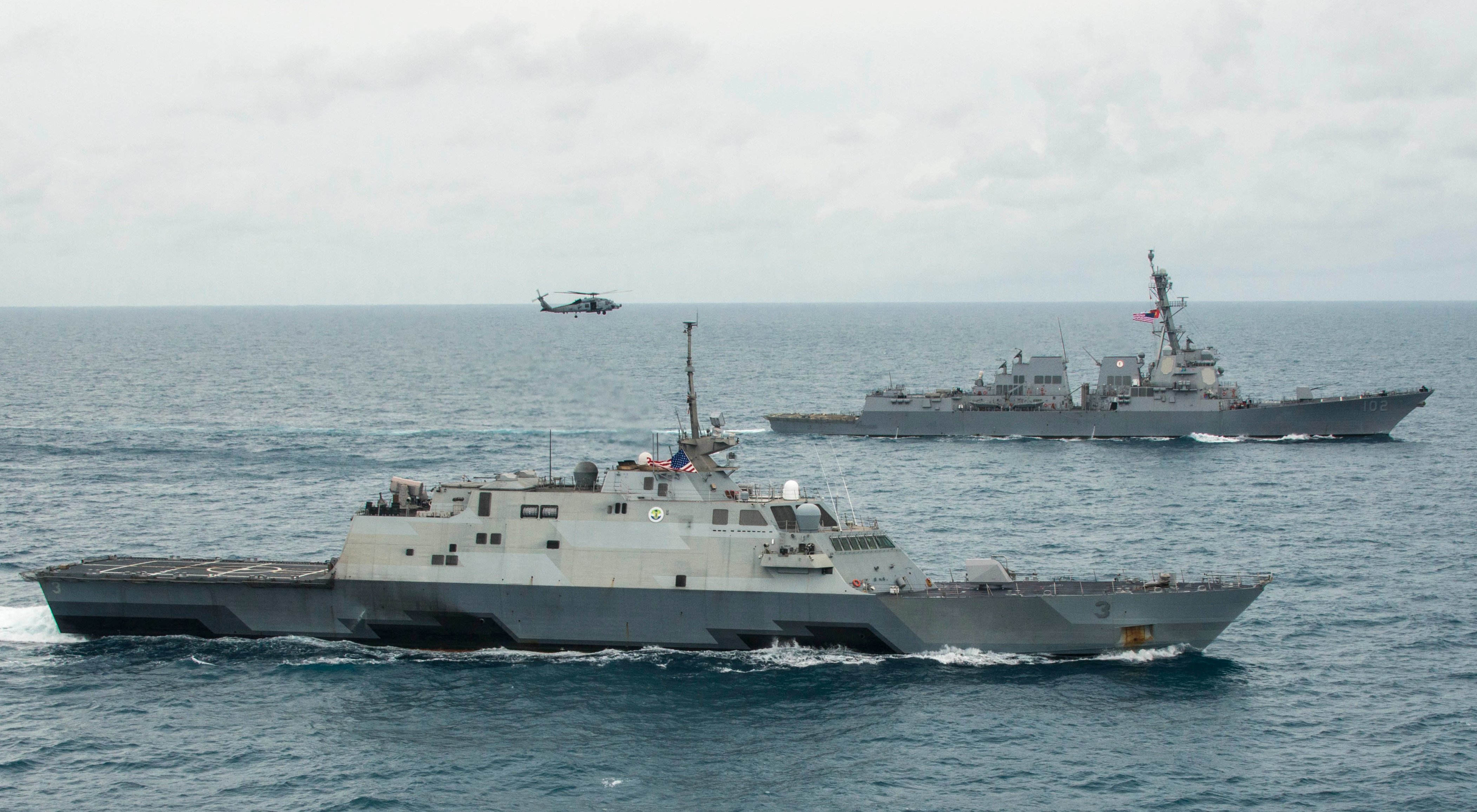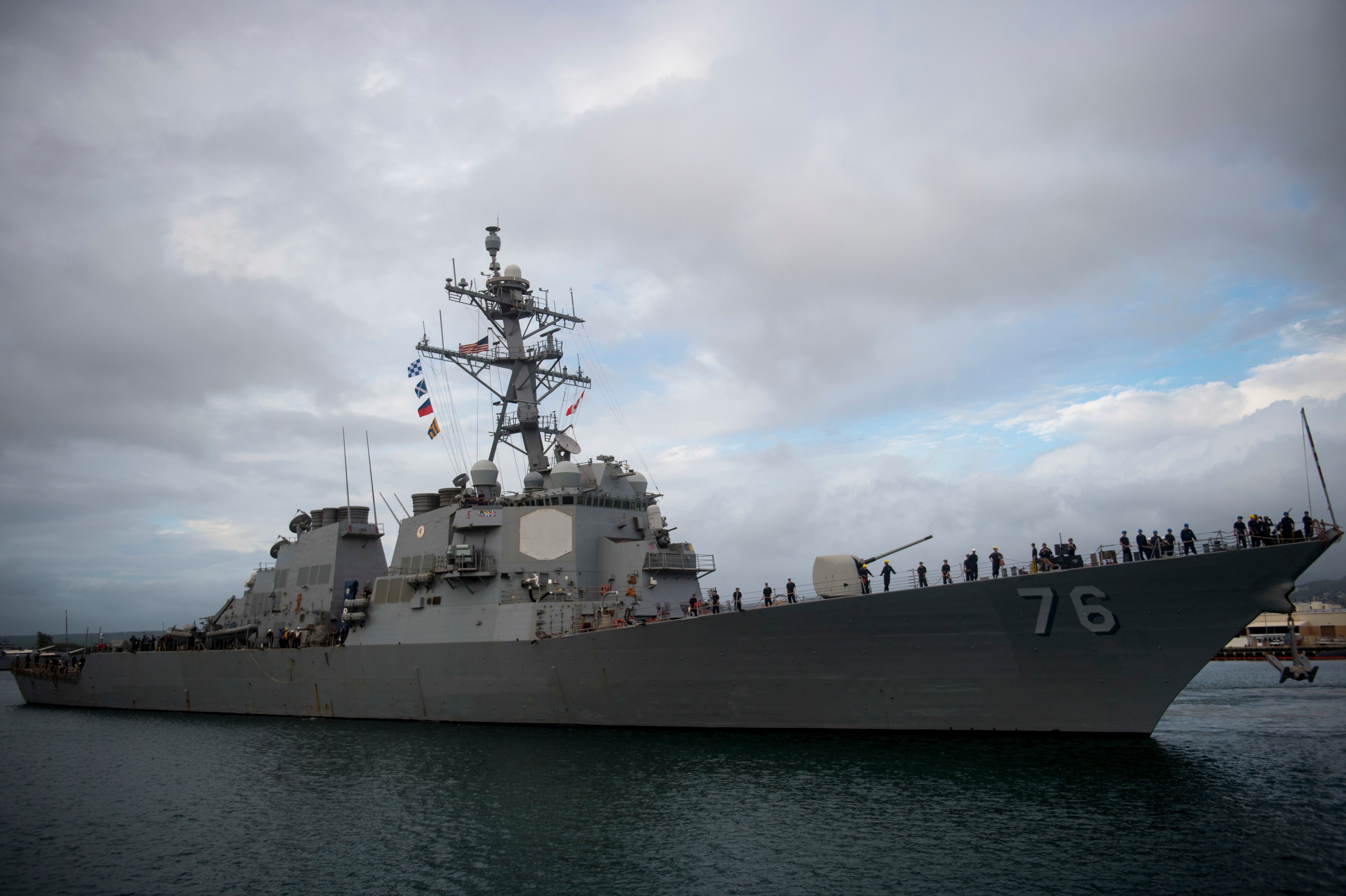
The second Freedom-class Littoral Combat Ship (LCS) has proven so much more reliable than the first that the Navy has been able to experiment with a new expeditionary maintenance model to extend the reach of the ship, the program executive officer for LCS told USNI News last week.
Rear Adm. Brian Antonio said that “as challenging as Freedom was, Fort Worth has just been phenomenal” in terms of material condition and ability to meet its operational requirements. Antonio previously served as the U.S. Pacific Fleet fleet maintenance officer when USS Freedom (LCS-1) made her maiden deployment, so he said he is intimately familiar with the number and severity of the casualty reports (CASREPS) that ship had.
USS Fort Worth (LCS-3), in stark comparison, in her maiden deployment has had “an order of magnitude [fewer CASREPS], in the order of hundreds of hours of corrective maintenance compared to thousands of hours of corrective maintenance, Fort Worth compared to Freedom. Fewer CASREPS, casualty reports; less severe casualty reports; less time to clear the casualty reports with CASCORS, casualty correction reports. Overall, we are experiencing with Fort Worth what we expect the class as it gets out in numbers to be more like, as opposed to Freedom.”
Antonio said that, for example, the Pacific Fleet opted to cancel one of Fort Worth’s maintenance availabilities so it could help search for the missing AirAsia Flight 8501 in January. Freedom, in comparison, spent more time than expected in maintenance and canceled operational obligations.
As a result, Freedom could not stray far from its maintenance hub in Singapore, whereas the Navy has begun experimenting with extending the reach of Fort Worth.
“One of the feedbacks we got back from the fleet with Freedom was that her legs weren’t very long, in that every 25 days or so she needed to come back to Singapore to get a maintenance availability – which means you can only go a certain number of days out, and its’ a big ocean,” Antonio said.
Fort Worth, on the other hand, just finished a maintenance availability in Sasebo, Japan, which Antonio said would not have been possible with Freedom. The fleet created a “maintenance in a box” concept, which included pre-staging two trailers in Sasebo – one filled with all the parts the ship and its mission package might require, and one with the tooling the maintenance workers would need to perform the work away from the hub in Singapore.
Antonio said the experiment was highly successful.
Going forward, the LCS program is looking forward to seeing its 3-2-1 deployment plan implemented in earnest – three crews for two ships, with one always deployed. Fort Worth will hit the halfway mark of her 16-month deployment this summer, and Freedom will go out as soon as Fort Worth comes home.
Meanwhile, in June Freedom will go through the ship class’s first ship restricted availability, an extended maintenance period, which Antonio said will be a learning opportunity for all involved.
By 2018, Antonio said all three mission packages will be tested and have reached initial operational capability; two ships of each hull variant will be deployed in Singapore; and a request for proposals will be out to industry for the LCS follow-on program, the new frigate.





